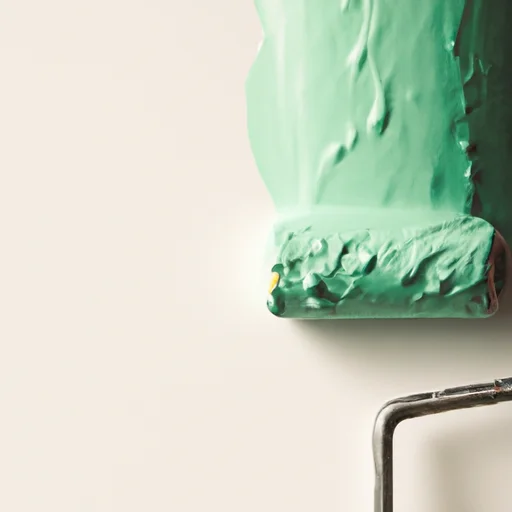So you’ve got a wall that’s already been painted, but you’re itching for a change. Maybe you want a different color, or perhaps you’re looking to update the room’s aesthetic. Whatever the reason, you’re now faced with the age-old question: how do you paint over something already painted?
In this article, we’ll break down the steps and techniques you’ll need to achieve a beautiful and smooth finish, ensuring that your refreshed walls will be the envy of all your guests. Whether you’re a seasoned DIY enthusiast or a novice painter, we’ve got you covered with easy-to-follow instructions and expert tips. Say goodbye to the old and hello to the new with our guide on how to paint over something already painted.
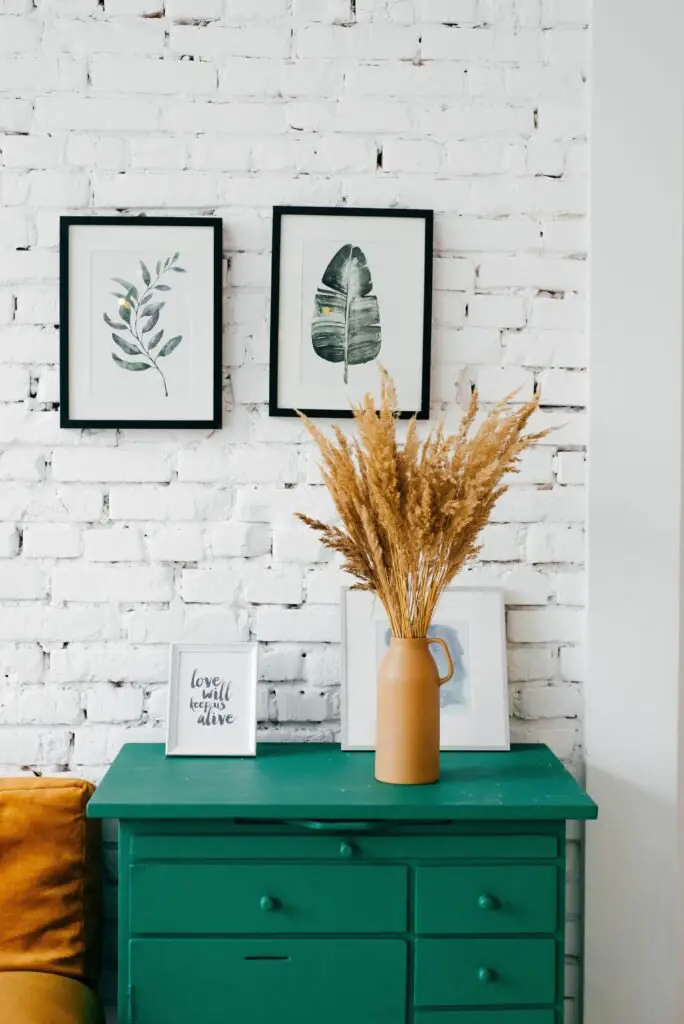
Table of Contents
How Do You Paint Over Something Already Painted?
Choosing the Right Paint
When it comes to painting, choosing the right paint is crucial to achieving the desired results. Before embarking on any painting project, we need to evaluate the existing paint, determine the new paint type, and consider surface compatibility.
Evaluate the Existing Paint
Before applying a fresh coat of paint, it is essential to assess the condition of the existing paint. We need to ensure that the previous paint is in good condition, free from peeling, cracking, or bubbling. If the paint is in good condition, we can proceed with the painting process. However, if there are any issues with the current paint, we may need to remove it before applying a new coat.
Determine the New Paint Type
Once we have evaluated the existing paint, we can determine the type of paint that will work best for our project. There are various paint types available, such as latex, oil-based, and acrylic. Each type has its own characteristics and advantages. For example, latex paint is easy to clean up with water, while oil-based paint provides a durable finish. Considering our specific needs and the surface we are painting will help us make an informed decision on the new paint type.
Consider Surface Compatibility
Another crucial factor to consider when choosing the right paint is surface compatibility. Different surfaces, such as wood, metal, or drywall, may require specific types of paint. It is important to select a paint that is designed for the surface we are working on to ensure proper adhesion and long-lasting results. Reading the labels and consulting with professionals can provide valuable guidance in determining the most suitable paint for our project.
Preparing the Surface
Preparing the surface properly is an essential step in achieving a professional-looking paint job. This involves cleaning the surface, sanding it to create a smooth texture, and filling any imperfections.
Clean the Surface
Before starting any painting project, it is crucial to clean the surface thoroughly. Dust, dirt, and grease can affect the paint’s adhesion, resulting in an uneven finish. We can use a mild detergent solution or a specialized cleaner depending on the surface we are working with. Scrubbing the surface gently with a sponge or a brush will remove any dirt or grime and provide a clean canvas for the paint.
Sand the Surface
Sanding the surface is necessary to create a smooth and even texture, especially if the existing paint is in poor condition or has an uneven surface. Using sandpaper with the appropriate grit, we can gently sand the surface, removing any rough patches or imperfections. This step ensures better paint adhesion and a more professional-looking finish.
Fill and Repair Imperfections
Before painting, it is crucial to fill in any cracks, holes, or other imperfections on the surface. Depending on the extent of the damage, we can use spackling paste, wood filler, or a similar product to fill these imperfections. Once the filler has dried, sanding it smooth will create an even surface. This step is particularly important for achieving a flawless finish, as any imperfections will be noticeable once the paint is applied.
Removing Old Paint
In some cases, it may be necessary to remove the old paint before applying a new coat. This is particularly true if the existing paint is in poor condition, flaking, or bubbling. There are several methods for removing old paint, including scraping, chemical paint strippers, and heat guns.
Scraping
Scraping is a common method for removing old paint, especially when dealing with loose or peeling paint. Using a paint scraper, we can carefully scrape off the old paint from the surface. It is important to exercise caution and avoid damaging the underlying surface. While scraping can be a labor-intensive process, it is an effective way to remove old paint, especially in smaller areas or tight corners.
Chemical Paint Strippers
Chemical paint strippers are a popular choice for removing multiple layers of paint or when dealing with larger areas. These products work by breaking down the paint’s chemical bonds, making it easier to scrape or peel off. It is important to follow the manufacturer’s instructions when using chemical paint strippers, as they can be hazardous if not used properly. Using protective equipment such as gloves and goggles is recommended to ensure safety.
Heat Gun
A heat gun is another method for removing old paint, particularly for surfaces with intricate details or stubborn paint. By applying heat to the old paint, it softens and becomes easier to scrape or peel off. It is important to be cautious when using a heat gun as it can cause burns or damage the surface if not used properly. Using a heat gun in a well-ventilated area and wearing protective gear is essential for safety.
Priming the Surface
Priming the surface is a crucial step in the painting process as it improves the paint’s adhesion, enhances coverage, and helps achieve a more consistent finish. Understanding the importance of primer, selecting the right primer, and applying it correctly is key to a successful paint job.
Importance of Primer
Primer creates a stable base for the new paint, allowing it to adhere better to the surface. It also helps seal porous surfaces, preventing the paint from being absorbed unevenly. Additionally, primer enhances the coverage of the paint, reducing the number of coats required to achieve the desired color and finish. Skipping the primer can result in an uneven paint job and may require more paint to achieve the desired results.
Select the Right Primer
Choosing the appropriate primer is essential to ensure compatibility with the paint and surface. There are different types of primers available, such as universal primers, stain-blocking primers, and bonding primers. Universal primers are suitable for most surfaces, while stain-blocking primers are designed to prevent stains from bleeding through the new paint. Bonding primers are ideal for surfaces that are difficult to adhere to, such as glossy or slick surfaces. Reading the instructions on the primer and consulting with professionals can help in selecting the right primer for our specific needs.
Apply Primer
Applying primer is similar to painting, but it requires attention to detail to ensure even coverage. Using a brush or a roller, we can apply the primer in smooth and even strokes, following the grain of the surface. It is important to cover the entire surface adequately, paying attention to corners and edges. Once the primer has dried according to the manufacturer’s instructions, we are ready to apply the new paint.
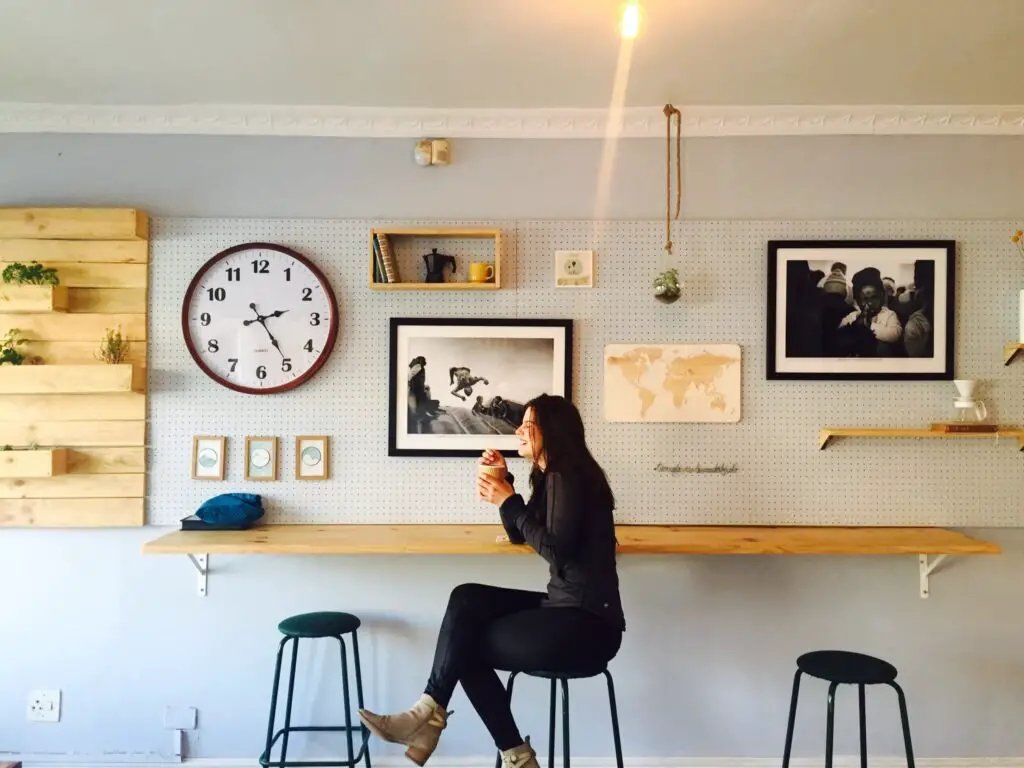
Applying the New Paint
Applying the new paint is where the transformation of the surface truly takes place. To achieve a smooth and professional-looking finish, we need to choose the right tools, select the appropriate technique, and take our time during the painting process.
Choose the Right Tools
Selecting the right tools is crucial for achieving a successful paint job. Brushes, rollers, and sprayers are commonly used for applying paint, and the choice depends on the surface and the desired finish. Brushes are ideal for smaller areas, corners, and edges, while rollers provide faster coverage for larger surfaces. Sprayers are often used for large-scale projects or surfaces with intricate details. Investing in high-quality tools will result in a more even application and a better overall finish.
Select the Appropriate Technique
Different painting techniques can achieve different effects and finishes. For most surfaces, using a “W” or “M” motion while painting with a brush or a roller ensures even coverage. It is important to avoid using too much pressure or creating visible lines and streaks. For surfaces with texture or raised details, stippling or dabbing with a brush can provide a unique and textured finish. Experimenting on a small inconspicuous area before committing to the entire surface can help determine the most appropriate technique for the desired result.
Start Painting
When ready to start painting, it is important to take our time and work systematically to achieve the best results. Beginning in one corner of the surface, we can apply the paint in smooth and even strokes, moving in one direction. It is important to ensure even coverage and avoid applying too much paint at once, as this can result in drips or an uneven finish. Taking breaks as needed and allowing sufficient drying time between coats will help us maintain a steady pace and achieve a professional-looking paint job.
Ensuring Proper Drying
Proper drying is essential to ensure that the paint cures correctly, creating a durable and long-lasting finish. Allowing sufficient drying time, creating adequate ventilation, and avoiding moisture or humidity are key factors in ensuring the paint dries properly.
Allow Sufficient Drying Time
Different types of paint and environmental conditions can affect drying times. It is important to read the manufacturer’s instructions on the paint can and allow the recommended drying time between coats. Rushing the drying process can result in an uneven finish or damage the paint. Patience is key in achieving a professional-looking paint job, so we should resist the temptation to touch or move items until the paint has fully dried.
Create Adequate Ventilation
Proper ventilation is crucial during the drying process to allow the paint to cure correctly. Opening windows or using fans to circulate air will help speed up the drying process and prevent the accumulation of fumes. Creating adequate ventilation also helps prevent the paint from developing a strong odor or becoming stagnant, ensuring a healthier and more comfortable environment while the paint dries.
Avoid Moisture or Humidity
Moisture and humidity can significantly affect the drying process and the overall quality of the paint job. It is important to avoid painting on humid or rainy days, as the moisture in the air can interfere with the paint’s adhesion and drying time. Additionally, ensuring that the surface is dry before painting and protecting the painted surface from moisture during the drying process will help achieve a smooth and lasting finish.
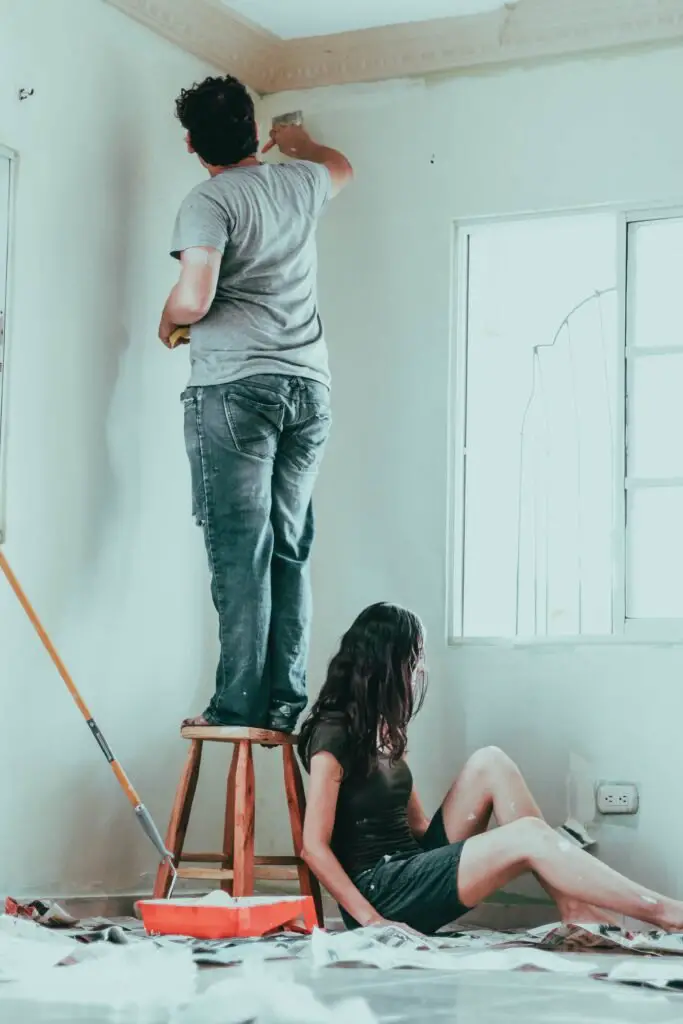
Inspecting the Paint Job
After the paint has dried, it is important to inspect the paint job to ensure a satisfactory result. Checking for smooth and even coverage, assessing color consistency, and looking for any drips or imperfections will help identify any necessary touch-ups or corrections.
Check for Smooth and Even Coverage
Inspecting the surface for smooth and even coverage is crucial to achieving a professional-looking finish. Running our hand lightly over the painted surface will help identify any rough patches or inconsistencies. Using proper lighting and stepping back to evaluate the overall appearance of the painted surface will also reveal any areas that may require additional coats or touch-ups.
Assess Color Consistency
Color consistency is important to ensure that the paint has dried evenly and provides a uniform appearance. Comparing the color of the painted surface to the desired color, as well as to the color of any adjacent surfaces, will help identify any color variations or discrepancies. Addressing any color issues promptly will help achieve a cohesive and visually appealing result.
Look for Drips or Imperfections
Carefully inspecting the painted surface for drips, streaks, or other imperfections is essential to achieving a flawless finish. Using proper lighting and taking our time to observe the surface from different angles will reveal any blemishes that may have occurred during the painting process. Addressing these imperfections, whether through touch-ups or necessary corrections, will ensure a more polished and professional result.
Touch-Ups and Finishing
Identifying areas that require touch-ups or corrections is the final step in achieving a flawless paint job. By performing necessary touch-ups and adding finishing touches, we can ensure a seamless and visually appealing result.
Identify Areas Requiring Touch-Ups
During the inspection process, we may identify areas that require touch-ups due to missed spots, color variations, or imperfections. Marking these areas with painter’s tape or mentally noting them will help guide us during the touch-up process. It is important to address these areas promptly to ensure a consistent and cohesive appearance.
Perform Necessary Corrections
Performing necessary corrections, such as removing drips or streaks, blending color variations, or addressing any imperfections, will help achieve a more professional-looking finish. Using a fine brush for precise touch-ups or corrective techniques, such as feathering or blending, will help seamlessly integrate these corrections with the rest of the painted surface. Taking our time and paying attention to detail will ensure a more polished end result.
Add Finishing Touches
Once any touch-ups or corrections have been made, adding finishing touches can enhance the overall appearance of the paint job. This may include adding an extra coat of clear varnish for added durability, applying a protective topcoat for surfaces exposed to high traffic or moisture, or using decorative techniques such as stenciling or faux finishes. These finishing touches can elevate the aesthetics of the painted surface and provide a more personalized touch.
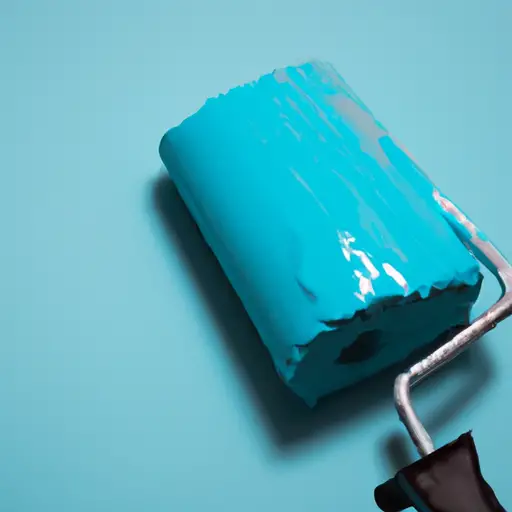
Cleaning Up
Properly cleaning up after completing a paint job is essential for maintaining the longevity of our painting tools and restoring the area to its original condition.
Properly Dispose of Waste
Disposing of waste materials such as used paint cans, brushes, and other painting accessories properly is important for environmental and safety reasons. Unused paint can be donated or recycled, while empty paint cans should be recycled or disposed of according to local regulations. Cleaning solvents or paint thinner should also be disposed of correctly to avoid environmental contamination. Following proper disposal practices ensures that we are being responsible and environmentally conscious painters.
Clean Painting Tools
Cleaning our painting tools promptly after use is essential for preserving their longevity and preventing any residual paint from affecting future projects. Depending on the type of paint used, brushes and rollers can be cleaned with water for latex paint or with appropriate solvents for oil-based paint. We should ensure that all the paint has been thoroughly removed from the tools and that they are fully dry before storing. Taking care of our painting tools will save us money in the long run and ensure that they are ready for future projects.
Restore the Area
After completing a paint job, it is important to restore the area to its original condition. Removing any protective coverings, such as drop cloths or painter’s tape, and cleaning up any stray paint splatters or drips will help restore the area to its pre-painting state. This final step ensures that our paint job stands out for all the right reasons and leaves the surrounding area clean and tidy.
Tips and Tricks
Painting can be a rewarding but challenging task. Here are some tips and tricks to help us achieve better results and make the painting process more efficient and enjoyable.
Use Lighter Colors for Better Coverage
When choosing a paint color, opting for lighter shades can provide better coverage, especially when painting over a darker color. Lighter colors tend to require fewer coats, reducing the time and effort involved in achieving the desired color and finish. Additionally, lighter colors can create a more spacious and airy ambiance in a room, making it feel brighter and more welcoming.
Consider Using a Paint Conditioner
For smoother and easier application, especially when using water-based paints, consider using a paint conditioner. These additives improve the flow and leveling of the paint, reducing brush or roller marks and ensuring a more even finish. Paint conditioners can be particularly beneficial when working on larger surfaces or when using certain painting techniques that require extended work time.
Avoid Overworking the Paint
While it can be tempting to keep going over areas that appear uneven or streaky, overworking the paint can actually cause more problems. Constantly going back over the paint can create a muddled or blotchy finish and may even cause the paint to lift or peel. It is best to apply the paint in smooth and even strokes and then allow it to dry. If necessary, perform touch-ups or corrections once the paint has fully dried to ensure a more cohesive and professional appearance.
By carefully considering the various aspects of a painting project, from choosing the right paint to cleaning up afterward, we can achieve a successful and satisfying result. Following these steps and utilizing helpful tips and tricks will make the painting process more efficient and enjoyable, resulting in a professional-looking finish that enhances the beauty of any space. Happy painting!


